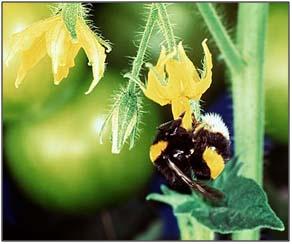Functional genomics of division of labor and reproductive dominance in bumblebees
Bees are by far the most important pollinators in agricultural and natural ecosystems. The recent collapse of honey bee populations, together with declines in wild bee (including bumble bee) populations, puts their pollination services under severe threat. A promising strategy for circumventing this risk is the domestication and mass-rearing of non-Apis bees. This approach has been successfully implemented for several bumble bees including Bombus terrestris in Israel, and B. impatiens in the US. In spite of their critical economic and environmental value, little is known about the physiology and molecular biology of bumble bees.
We are using RNA-seq technology to sequence RNA from worker bees performing different tasks and at different reproductive states and validate our findings with quantitative RT-PCR. We are also developing protocols for RNAi mediated knockdown of gene expression of key genes. We are using allatectomy, treatment with precocene and replacement therapy to test the influence of juvenile hormone on reproduction, division of labor, behavior, and brain gene expression.
A bumblebee (Bombus terrestris) worker "buzz pollinates" a tomato flower (photo credit, BioBee Sde Eliyaho)
Recent relevant publications
- Hamilton AR, Shpigler, H, Bloch, G, Wheeler DE, Robinson GE (2017) Endocrine Influences on Insect Societies. In: Pfaff, D.W and Joëls, M. (editors-in-chief), Hormones, Brain, and Behavior 3rd edition, Vol 2. Oxford: Academic Press; pp. 421–451.
- Shpigler HY, Siegel AJ, Huang ZY and Bloch G (2016) No effect of juvenile hormone on task performance in a bumblebee (Bombus terrestris) supports an evolutionary link between endocrine signaling and social complexity. Hormones and Behavior
- Sadd BM, Barribeau SM, Bloch G, et al.: (2015) The genomes of two key bumblebee species with primitive eusocial organisation. Genome Biology 16:623.
- Pandey A, Bloch G (2015) Juvenile hormone and ecdysteroids as major regulators of brain and behavior in bees. Current Opinion in Insect Science 12: 26-37
- Woodard SH, Bloch G, Band MR, Robinson GE (2014) Molecular heterochrony and the evolution of sociality in bumblebees (Bombus terrestris). Proceedings of the Royal Society of London B 281: 20132419
- Shpigler H, Amsalem E, Huang ZY, Cohen M, Siegel AJ, Hefetz A and Bloch G (2014) Gonadotropic and physiological functions of juvenile hormone in bumblebee (Bombus terrestris) workers. PLoS One 9(6): e100650.
- Woodard SH, Bloch G, Band M, Robinson GE (2013) Social regulation of maternal traits in nest-founding bumble bee (Bombus terrestris) queens. Journal of Experimental Biology 216: 3474-3482
- Shpigler H, Tamarkin M, Gruber Y, Poleg M, Siegel AJ, and Bloch G (2013) Social influences on body size and developmental time in the bumblebee Bombus terrestris. Behavioral Ecology and Sociobiology 67: 1601-1612.
Supported by grants from BARD (in collaboration with Gene E. Robinson and Mark Band, UIUC) and NAKFI (in collaboration with Oded Nov, NYU).

